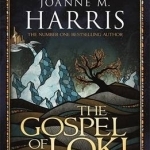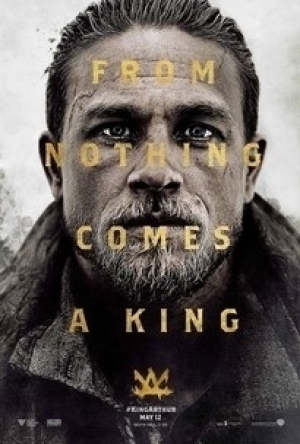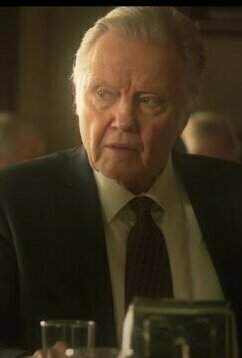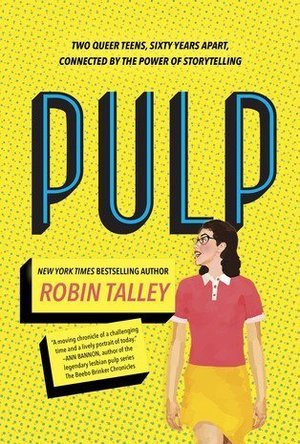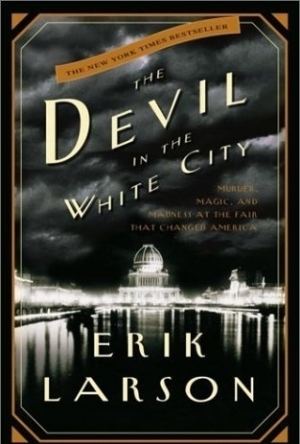Rachael Moyes (404 KP) rated The Gospel of Loki in Books
Jul 8, 2017
Odin rules the nine worlds from his fortress of Asgard. When this book starts his people, the Aesir, have finally made peace with the Vanir and members of both groups make up the Gods of Asgard. The world is split into Order and Chaos, with Odin and the Gods trying to maintain Order over the nine realms. Loki was born from Chaos and is essentially a demon with no physical form (or Aspect) living in the realm of Pandaemoniem under the evil Lord Surt. But Loki was curious about the worlds where Order and Chaos co-existed so he left Chaos and traveled to the worlds above where he gained a physical Aspect, met Odin and was invited back to Asgard where he became the 25th God.
He did not receive a warm welcome from the other Gods, however, and soon lived up to his names of Wildfire and the Trickster. This book, which I would imagine takes place over a number of years, tells the story of many of Loki’s exploits in the nine realms including when he tricked a builder into fortifying Asgard’s walls without paying him, cut off Sif’s golden hair (to Thor’s outrage), got Thor to dress up as a bride to infiltrate the Ice Folk and kill their enemies, met the giants of Utgard and their own Trickster Utgard-Loki, all the way up to Ragnarok and the final battle between Order and Chaos.
Okay, I’ve just tried to describe the plot fairly simply above and I don’t know how much sense it will have made if you’re not familiar with the Norse Gods, but hopefully it wasn’t too bad!
I’ve always found Norse Mythology very interesting, mainly, I think, because of the diverse characters and fanciful stories. We get to meet all those characters in this book; Odin, Thor, Frey, Freyja, Balder, Frigg, Sigyn, Skadi, Gullvieg-Heid & many more. And as this book is written in first person from Loki, we see them all from his point of view. I also loved Loki’s illegitimate children, particularly Hel, the ruler of the Underworld and Fenris the werewolf.
I know a fair bit about Loki from things I’ve read online and books about mythology so I was a bit wary going in about how historically accurate Joanne had written her character, but I have to say that I found her version of Loki spot on! She voiced him perfectly and I also found the other characters to be very close to what I’ve read about them.
I really enjoyed the author’s writing style and the story flowed so well that I found it really difficult to put down. Loki’s storytelling was both informative and engaging and each of his stories flowed into each other very well.
This book is very heavy on the Norse Mythology (obviously) and I think it’s probably best to go into it with a little bit of knowledge beforehand. I think that if I knew nothing of the subject before, I might have found it a bit overwhelming mainly due to the amount of characters and worlds. But saying that, it is so well written and well explained that I think anyone could read it, I just think you’d get more enjoyment out of it if you knew a bit about some of the characters first. There is a very useful character list at the beginning that you can go back to.
I would definitely recommend this book to anyone who loves Norse Mythology, especially Loki and Odin but I think anyone who likes a good fantasy novel would enjoy it :)
Movie Metropolis (309 KP) rated King Arthur: Legend Of The Sword (2017) in Movies
Jun 10, 2019
At this point, so goes the thought experiment, until we can perceive whether or not the cat is dead, the cat is dead AND alive simultaneously, and it is only when you look into the box that you know whether you have a friend for life or a Korean meal.
I bring this up because I often insist that I prefer a bad movie with great moments than a movie that’s adequate across the board, but Guy Ritchie’s most recent film certainly puts that to the test. It’s almost my favourite film of the year but is full of nigh-unforgiveable blunders that I don’t think I can watch it again. But I don’t regret seeing it. King Arthur is both good and not good and the cat is still in the box.
Well, I might as well start with what’s good about the film. For one, the character of Arthur himself has a pretty interesting arc. Normally interpretations of the Arthur myth focus on the King bit, so despite it being yet another origin story, it at least is for a character who rarely gets one, and it’s an interesting spin on the reluctant hero arc.
In addition, the world itself feels like it desperately needs a hero. You get the sense that this world is falling apart, which is much better than some other chosen one narratives like Harry Potter, where even when Voldemort took over the wizarding world he didn’t seem to do anything. Also, this is a fantasy film that isn’t just Lord of the Rings again, but a more Celtic mystic mythology that is ripe for exploration.
Then there’s Jude Law, who is so moustache-twirlingly evil that he’s hilarious. He’s clearly having the time of his life playing this cartoon super villain and making him campy enough to be fun while still threatening and compelling when he needs to be.
Shame about the rest of the cast, who all have the same personality, that of “Ah’m just one o’ tha lads, apples and pears, apples and pears.” It’s like a Chelsea game but set in the Dark Ages. So it’s identical to a Chelsea game. The only exception is Astrid Frizbee’s mage, whose intense magic power is so devastating that she manages to put a sleep spell on the audience every time she opens her noise-hole and lets out a monotone bored drone.
There’s also the action, and Hollywood, we need to talk. I thought that shaky cam was just a phase, but I’ve seen you doing it again, and you need to stop. I’ve played VR games where you do nothing but ride particularly unstable cows and came out the other end less motion sick than your sword fighting scenes. Come on, you’re better than this, and we just what’s best for you, so just buy a steady-cam already.
Maybe it’s Guy Ritchie himself, though. Nothing in the film seems to last longer than three minutes aside Arthur’s whining. Sometimes it works, like the very snappy but informative way we see Arthur grow from stupid baby to stupid adult, and sometimes it’s stupid, like when an entire other movie’s worth of content gets squashed into an uninspired montage.
But that’s the great dilemma; the montages are good and bad, like the movie itself. You will only enjoy the movie if you enjoy the movie but if you don’t then you won’t. I write this piece a defeated critic, ladies and gentlemen. Is it worth seeing? I don’t really know. A bigger fan of Guy Ritchie or quantum mechanics than I will probably get something out of it and there are worse movies out there, but it also can’t help but disappoint somehow. The cat isn’t dead, but it has a bit of a cold.
https://moviemetropolis.net/2017/05/25/schrodingers-film-king-arthur-legend-of-the-sword-review/

Art Of Brick Laying
Productivity and Reference
App
This is a series of 236 tuitional and informative videos all on the art of brick laying and more! ...
Bob Mann (459 KP) rated Roe v. Wade (2021) in Movies
Mar 24, 2021
Following an early personal tragedy, Dr. Bernard Nathanson (Nick Loeb) is a leading abortion advocate, making a tidy living by performing abortions in New York. Together with writer and journalist Larry Lader (Jamie Kennedy) the pair lobby for the "Right to Choose": to legalize abortion across the country. They 'recruit' Norma McCorvey (Summer Joy Campbell), under the pseudonym of Jane Roe, to headline their case.
Against them are the 'Pro-Life' lobby headed by Dr. Mildred Jefferson (Stacey Nash) with Henry Wade (James DuMont), the district attorney for Dallas County, being the opposing plaintiff.
Positives:
- It's a brave team that put a movie together about such an emotionally charged subject, and Nick Loeb and crew should be congratulated for being brave enough to do so.
- As in "The Trial of the Chicago 7", this was subject matter from the era from the US 1960/1970's that I was completely unaware of, so I didn't know where the movie might go (no spoilers here).
- The movie plays its cards pretty close to its chest for most of the running time as regards whose 'side' it is on: pro-Life or pro-Choice. You see each team working their own corner, and the facts for and against are provided to the viewer (which Nick Loeb asserts have been thoroughly fact checked).
- The film comes to life most in some of the legal debates between Professor Robert Byrn (Joey Lawrence) and his students. These were the scenes which I enjoyed most, and Lawrence delivers one of the better acting performances in the movie.
- There's fun in seeing a lot of 'old pros' appearing in cameos as the supreme court judges: Jon Voight ("Mission Impossible"); Bond villain Robert Davi ("Licence to Kill"); Corbin Bernsen ("LA Law") and Steve Guttenberg ("3 Men and a Baby").
Negatives:
- There's no polite way to say this, but as a relatively low-budget movie, some of the supporting performances are on the decidedly ropy side.
- I wanted to see more of the legal debate between the members of the Supreme court.... but I suspect the shooting time available with these 'big name' actors was limited. That's a shame.
- This is not a "Trial of the Chicago 7", and the script is NOT by Aaron Sorkin. It generally lacks polish. And there is way too much "Oh, hello <<Insert full title and name of character here>>" which is distractingly unnatural (just use sub-titles!).
- Those familiar with my blog will know of my UTTER HATRED of voiceovers in movies! This is deployed throughout (by Nick Loeb) and irritated me enormously. More "Show".... less "Tell"!
- The movie doesn't know when to quit. There is a natural and dramatic "end point" to the story. But the movie tacks on multiple 'epilogue' scenes. Some of these are interesting and informative, showing broadcasts of the 'real-life' participants. Others are superfluous, and lessen the overall impact of the message. IMHO, it would have been better to end at the natural end-point of the story, then 'do a "Sully"' by dropping the real life photos and interviews as insets into the end-titles.
I'll sometimes put 'warnings' for sensitive viewers into my reviews. As the subject matter is abortion, then this may naturally self-deselect certain viewers. But to be clear, the movie does 'go there' in two short, almost subliminal, scenes that will almost certainly upset any parents that have been through any form of pre-natal loss. Watcher beware.
(For my full graphical review, please check out One Mann's Movies review here - https://bob-the-movie-man.com/2021/03/24/roe-v-wade-theres-a-fortune-in-abortion/. Thanks.)

Natural Cycles, Birth Control
Health & Fitness and Medical
App
Natural Cycles helps you keep track of your ovulation, period and fertility. The app will show you...

Road to Hana Maui GyPSy Guide
Travel and Navigation
App
GyPSy Guide GPS driving tour of the Road to Hana is an excellent way to enjoy a sightseeing trip on...

Kauai GyPSy Guide Driving Tour
Travel and Navigation
App
GyPSy Guide GPS driving tour of Kauai is an excellent way to enjoy a sightseeing trip to explore the...
"Janet had never understood, not until she turned the thin brown pages of Dolores Wood's novel, that other girls might feel the way she did. That a world existed outside the one she'd always known."
I loved this book so incredibly much that I can't even really explain it. It was captivating and beautiful and tragic and just appealed to me on so many levels. I have always been interested in lesbian pulp fiction since doing a project on it for a Queer Studies class in college, so it was so fascinating to read about Abby's research within the pages of this novel.
Talley effortlessly weaves so many narratives within this one that it sort of leaves you breathless at times. We have Abby's narrative, Janet's narrative, and then excerpts from the book by Marian Love that Abby grows to love so much, "Women of the Twilight Realm." The parallels are really striking between Abby and Janet, as each are discovering lesbian pulp fiction in their own era and using it to grow and learn about themselves.
Even more, we see how much things have changed between the 1950s and 2017. It's horrifying to see what Janet (and the entire gay community) had to endure, and the book really serves to educate on how terrible things were then. While I knew bits and pieces about the Lavender Scare, its ties to our actual characters here really brings it home. I have to say, I just adored Janet. She seems so incredibly real, and I just fell for her and her incredible strength and bravery. I think she will remain one of my favorite characters in lesbian fiction (and all fiction) for all time.
As for Abby, I really liked her too, although in some of her sections, I was more captivated by her research than her story. Still, she presents a poignant tale of a young bisexual trying to find herself, and I appreciated the diverse set of characters with whom she surrounds herself. Abby and her friends stand in stark contrast to Janet in their sexual freedoms, but, in many ways, they aren't so different at heart.
"That was the best part of being in love. The way it set the rest of the world on mute."
I just really really loved this book. It has so much of what I love--lesbians, diverse characters, passionate and realistic storylines, well-done research, literary references and ties. Reading Janet and Abby's stories took me back to a time when I wasn't yet out and when I had first come out--when the world wasn't yet so forgiving (not that it always is, but things were pretty different even 15+ years ago). I remember how much comfort books provided me, how wonderful it was to realize I wasn't alone in the world. I love how well this book shows that fact, and how the books-within-the book are almost their own characters.
Overall, I can't recommend this one enough. It's just a beautiful, well-written story, and, to top it off, it's informative to boot. The characters are lovely, the story is amazing, and it really leaves you feeling a bit awed. Highly recommend.
I received a copy of this novel from the publisher and Netgalley in return for an unbiased review (thank you!).
Hadley (567 KP) rated The Devil in the White City: Murder, Magic, and Madness in Books
Jan 18, 2021
He's been a doctor and a licensed pharmacist, who then conned an old couple into selling their drug store to him where he preyed on young girls and ignorant customers that would buy whatever Holmes would tell them to buy, whether it were real or fake tonics.
He was a building owner who had a murder hotel secretly built with " a wooden chute that would descend from a secret location on the second floor all the way to the basement... ", "a room next to his office fitted with a large walk-in vault, with airtight seams and asbestos-coated iron walls. A gas jet embedded in one wall would be controlled from his closet...", "a large basement with hidden chambers and a sub-basement for the permanent storage of sensitive material. "
He owned and ran an alcohol-treatment company known as the Silver Ash Institute that claimed to have the cure for alcoholism.
He was a traveling business man, who had two wives and two children. He established the Campbell-Yates Manufacturing Company, which made nothing and sold nothing.
He was also labeled as America's first serial killer. His body count is unknown even today; his victims were frequently young women, which included stenographers and house wives. He was best known for convincing people who trusted him to sign him as the beneficiary of their life insurance policies, only to kill them and make it seem an accident so he could collect the money.
Holmes grew up in a small farming village in New Hampshire, where he briefly spoke about an early fear of a human skeleton that hung in a doctor's office: " 'I had daily to pass the office of one village doctor, the door of which was seldom if ever barred,' he wrote in a later memoir. 'Partly from its being associated in my mind as the source of all the nauseous mixtures that had been my childish terror (for this was before the day of children's medicines), and partly because of vague rumors I had heard regarding its contents, this place was one of peculiar abhorrence to me.' "... "Two children discovered Mudgett's [Holmes' real last name] fear and one day captured him and dragged him 'struggling and shrieking' into the doctor's office. 'Nor did they desist,' Mudgett wrote, 'until I had been brought face to face with one of its grinning skeletons, which, with arms outstretched, seemed ready in its turn to seize me. It was a wicked and dangerous thing to do to a child of tender years and health,' he wrote, ' but it proved an heroic method of treatment, destined ultimately to cure me of my fears, and to inculcate in me, first, a strong feeling of curiosity, and, later, a desire to learn, which resulted years afterwards in my adopting medicine as a profession.' "
Erik Larson's fourth book, the Devil in the White City, is only partly about Holmes and his dark trail of murder and lies. The story told is mostly centered around the planning and building of the 1893 World's Fair. The prologue opens with one of the architects aboard a ship long after the fair has ended - - - 1912 to be exact- - - where he begins to write of the fair in his diary. The next chapter continues on with Chicago competing against other major cities to win the rights to host the World's Fair. Chicago was not the ideal place for the fair because it was known for it's crime and slaughter houses - - - this was exactly why the politicians wanted it so badly there, so it would help to lighten the image of Chicago for the rest of the world. Even the local Whitechapel Club that had sprouted up after the infamous murders by Jack the Ripper, were excited to win the rights to host the fair in their city, and celebrated in a macabre way:
"Upon learning that Chicago had won the fair, the men of the Whitechapel Club composed a telegram to Chauncey Depew, who more than any other man symbolized New York and its campaign to win the fair. Previously Depew had promised the members of the Whitechapel Club that if Chicago prevailed he would present himself at the club's next meeting, to be hacked apart by the Ripper himself - - - metaphorically, he presumed, although at the Whitechapel Club could one ever be certain? The club's coffin, for example, had once been used to transport the body of a member who had committed suicide. After claiming his body, the club hauled it to the Indiana Dunes on Lake Michigan, where members erected an immense pyre. They placed the body on top, then set it alight. Carrying torches and wearing black hooded robes, they circled the fire singing hymns to the dead between sips of whiskey. The club also had a custom of sending robed members to kidnap visiting celebrities and steal them away in a black coach with covered windows, all without saying a word.
The club's telegram reached Depew in Washington twenty minutes after the final ballot, just as Chicago's congressional delegation began celebrating at the Willard Hotel near the White House. The telegram asked, 'When may we see you at our dissecting table?' "
There are chapters in-between, technically reading like a side story, that tell us about Holmes and his misdeeds in Chicago, but there just wasn't enough about Holmes that I could consider this a True Crime book, nor an informative book about Holmes. Unfortunately, when the reader begins to really dwell into the story of Holmes, it's quickly ended by having two or more chapters about the building of the World's Fair. One interesting point about the story is that the reader does get to see how many inventions were brought to light because of the Fair, such as the invention of the Ferris Wheel. Larson's writing is very coherent and the descriptions are so well done that the reader is practically transported back to the late 1800s, yet, before I finished the book, I felt misled by the title... then coming across everything that happened to not only the Fair, but the people who were involved with it, it's hard not to wonder if the whole thing was cursed, thus the Devil being in the White City.
One of the side stories I did really enjoy was the slow unfolding of a man named Prendergast. A delusional young man who ran one of the groups of paperboys in Chicago, who was also obsessed with politics, became a determined supporter of Mayor Harrison; after Harrison was voted into office again, Prendergast believed it was because of him and the letters he sent out to numerous politicians and potential voters. Prendergast also believed he deserved a chair on the council for Harrison's re-election, for which he even showed up at City Hall to take over. This incident was the straw that broke the camel's back for Prendergast - - - he was humiliated when the people there laughed in his face. Prendergast then decided to take matters into his own hands, and bought a revolver. The day before the Fair would end, Prendergast showed up at Harrison's home and shot him. Harrison died minutes later. Prendergast turned himself in for the murder as soon as he left Harrison's residence. When asked why he had done it, Prendergast responded: " ' Because he betrayed my confidence. I supported him through his campaign and he promised to appoint me corporation counsel. He didn't live up to his word.' "
This book has been voted as a top True Crime must-read novel. I don't agree with this. As I said before: Holmes' chapters are few; eighty percent of this book is about the building of the World's Fair. As a True Crime junkie, I didn't enjoy this one, but also as a history junkie, I enjoyed learning about the Fair and everything that happened. I can't recommend this book to TC fans or horror fans. It's mostly history and architecture.
